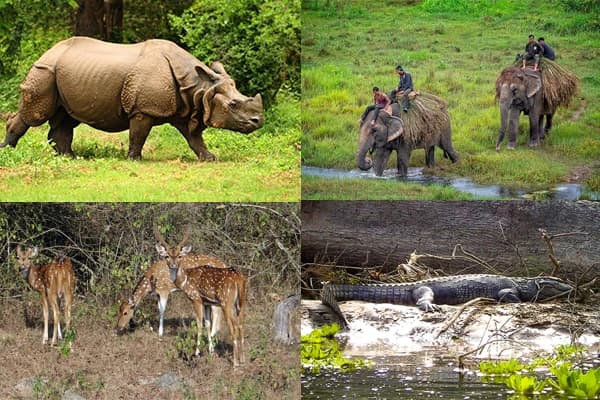Landscape and Terrain
Mount Ama Dablam has sharp, exposed ridges and steep faces. The sharkfin-like appearance of southwest ridges makes it visually striking against the Himalayan horizon. Being a part of the Mahalangur ranges and located on the South side of Mt. Everest and Lhotse. The world’s highest mountain is seen from the peak of Mount Ama Dablam.
History of Mt. Ama Dablam Ascents
New Zealand team led by Sir Edmund Hillary successfully climbed Mount Ama Dablam for the very first time in 1961. The popularity of peak climbing of Mount Ama Dablam started to rise among the mountaineers. As of now, the technological improvement and accessibility of mountaineering equipment have been helping the mountaineers to achieve their dreams. It also holds a cultural significance to the Sherpa people. This mountain has been a popular destination for those who are seeking a memorable experience by peak climbing.
Notable ascents
- In 1961, Mike Gill (NZ), Barry Bishop(US), Mike Ward (UK), and Wally Romanes (NZ) became the first team to attempt Mount Ama Dablam peak climbing and got the victory via Southwest Ridge.
- Martin Boysen (UK), Tom Frost, David Breashears, Greg Lowe, Jeff Lowe, Peter Pilafian, Jonathan Wright (all US), and Lhakpa Dorje (Nepal) reached their peak on 22 April 1979. On the next day, Doug Robinson and John Wasson (both USA) successfully climbed the summit. Both of these two teams climbed the summit via Southwest Ridge.
- Jeff Lowe became the first one to climb the peak solo via South Face on 30 April 1979.
- Raymond Renaud and Yvan Estienne led the team of 14 Frenchmen and 4 Nepalese Sherpa to reach the top of the mountain in three days, 21 to 23 October 1979.
- Australian native Tim McCartney-Snape, Lincoln Hall, and Andrew Henderson reached the summit of the mountain via Northeast Spur to North Ridge in 1981.
- In 1983, Alain Hubert (Belgium) and André Georges (Switzerland) set foot on the peak of the Mountain via East Ridge.
- Naoe Sakashita from Japan steeped on the mountain peak via Southwest Ridge in 1984.
- In 1985, Naoe Sakashita again reached the peak with Masayuki Ariake through Westface.
- Michael Kennedy and Carlos Buhler both from the United States ascended the peak successfully in in 1985.
- In 1996, Vanja Furlan and Tomaž Humar (both from Slovenia) stepped on the peak via the Stane Belak Šrauf Memorial Route which eventually let them earn the 1996 Piolet d'Or prize.
- Friedl Huber, Max Berger, Alois Badegruber, and Roman Dirnböck successfully stopped on the peak of the mountain via North Ridge Austro-German alpine-style ascent in 1996.
- In 2001, a native of the United Kingdom, Jules Cartwright and Rich Cross made a successful ascent through Northwest Ridge.
- The first arab woman, Nadhira Al Harthy, and Asma Al Thani steeped on the summit in 2021. Nadhira became the first Qatari woman to climb the peak.
- The French mountain guide, Matheo Jacquemoud, successfully stepped the mountain peak in 2023.
Routes of Mt Ama Dablam Ascents
The ascent of Mount Ama Dablam can be done via many routes. All of these routes are full of challenges and difficulties. The most used routes for mountain climbing are described below.
Mt. Ama Dablam climbing via the Southwest Ridge route is the most commonly used route. The journey to the base camp of Mt Ama Dablam begins by trekking from Lukla (4,570 m). It is the starting point of the expedition, then it takes you towards Camp 1 (5,700 m). The path is followed by traverse rocky terrain and steep sections. After that, route ascent to the Yellow Tower, one of the most famous towers which can be reached only with professional climbing skills. Next, a climber will arrive at Camp 2 which is at 6100m. It is considered as the resting point along with a spectacular view of the surrounding Himalayas.
Then, climbing with careful navigation takes you to the mushroom ridge which is named after the Mushroom-shaped structure of rocks. Across Mushroom Ridge, we will reach the final resting point of the expedition, Camp 3. It is situated at an altitude of 6,400 m. The ascent becomes more challenging and we will reach the Summit push with a steep snow slope, frozen surface, and rocky terrain. Finally, we will reach the summit of Mount Ama Dablam which has a tall height of 6,812 m. With breathtaking views of the surrounding peak, you will achieve the great accomplishment of your life.
Furthermore, solid mountaineering skills, climbing equipment proper use, glacier travel, and technical skills of climbing are very important to achieve victory in summit climbing of Mount Ama Dablam. Professional guides and mountaineering agencies help you throughout the expedition.
This route is more challenging so it is not commonly used by the expeditors. The Northwest Ridge also begins from the base camp by diverting left from the Southwest Ridge. The mixed climbing and steep snow slopes will require advanced mountaineering skills. It is only suitable for experienced climbers.
Mount Ama Dablam is also climbed via North Ridge. This route is very challenging and is used rarely. The path takes you to the Mingbo Glacier, steep snow, and ice slopes, and to the top of the mountain. It demands technical ice-climbing skills and many years of experience in mountaineering with careful planning and preparation. The condition of the route varies according to the season, so climbers should consult about the condition of the route with the mountaineering agencies
Best Time for Mount Ama Dablam Expedition
There are four seasons in Nepal, they are Spring, Autumn, Winter, and Spring. Weather is an important factor that determines the success rate of the expedition. The different season comes with different experiences and challenges. So, to capture the magnificent mountain view and surrounding Himalayas, you have to choose an appropriate season. The Mount Ama Dablam Expedition is done throughout the year but the ideal season for this expedition is Spring and Autumn season. This season is characterized by stable weather and a suitable climate with clear skies and reduced precipitation. This offers clear visibility of the breathtaking glimpse of the surrounding mountains.
Accidents on the Mount Ama Dablam
There are many cases where mountaineer has lost their life either at the time of ascent or descent. The finest mountaineers of Britain George Fraser and Mike Harris never returned in May 1959. They were last seen at 6,400 meters (21,000 ft) on the mountain’s north ridge. Similarly, a large serac fell from the hanging glacier which eventually swept the site of Camp III on the night of 13/14 November 2006. This resulted in the death of three European and three Nepalese climbers. The serac fell in so much magnitude that it cleared all the camps of the third camp. According to the eyewitness, this third camp was not placed at an abnormal spot but ended up in destruction.
The popular peak climber, Sherpa Lakpa Thundu Sherpa of Pangboche lost his life while climbing the peak on November 28, 2016. When an earthquake of 5.4 magnitude hit along with an avalanche and the ice blocks were released, Sherpa was hit by it when he was at an altitude of 6,000m. He was only a few meters away from the peak of Mount Ama Dablam. Valery Rozov died when he jumped from the cliff of the mountain in a wingsuit which ended up hitting a cliff. Rozov died on November 11, 2017.
Challenges
The expedition of the peak climbing to the Ama Dablam is quite challenging. The journey takes you to an altitude of 6,800 m which requires mountaineering skills as well as technical equipment. Careful acclimatization and dealing appropriately with high altitude conditions like oxygen reduction, acute mountain sickness, steep slopes, icy paths, and long climbing days, help you to reach the peak of Mount Ama Dablam. Here are some interesting facts regarding the challenges of the peak climbing of Mount Ama Dablam are described below:
- Technical climbing: The path to the mountain's peak is filled with technical climbing challenges and a mixture of rocky and icy terrain. The steep ridges and upright vertical ascent beyond the yellow tower of Southwest Ridges are only crossed with skills in rock climbing, ice climbing, and the use of climbing equipment such as ropes, crampons, and ice axes.
- Altitude: Ama Dablam Peak has a height of 6,812 m. The journey above 2000 brings many challenges like acute mountain sickness, avalanches, erosion, and so on. The summit climber of Mount Ama Dablam has to pass through all of the above difficulties to get the victory. Acclimatization helps you to adapt to the higher altitude and reduce the probability of acute mountain sickness.
- Weather Condition: The unpredictable weather conditions of the Himalayas bring further difficulties in the journey. The weather conditions like high winds, extreme cold, and sudden snow avalanches bring negative impacts on the ascent. It will affect both the mental and physical willpower of the climbers. The adverse weather and flexible plans surely affect the planning of the ascent.
- Steep and Exposed Topography: The ascent is full of steep and exposed terrain which certainly demands strong climbing techniques and proper concentration of the footwork.
- Length of the Climbing: The peak climbing of Mount Ama Dablam requires more than 5 weeks. The longer days allow mental and physical rest during the journey and it boosts the willpower as well.
Conclusion
Ama Dablam, one of the beautiful mountains is becoming popular for peak climbing in Nepal. The mixture of technical climbing skills and spectacular view of the skyrocketing peaks the journey more challenging. The beauty of the expedition is the steep ridges and icy slopes which push your limits. The iconic jewel of the mountain has taken many lives either by avalanches or serac falls. With proper experience and technical skills, one can easily climb the Mountain and make a lifetime memory. You will get a unique opportunity to immerse in the culture and tradition of the Sherpa community in the Khumbu region.





